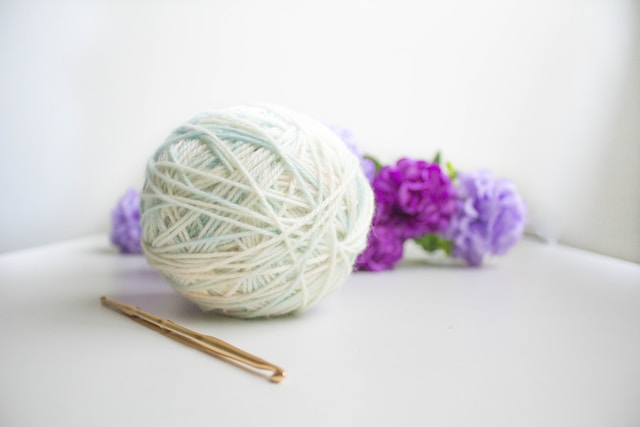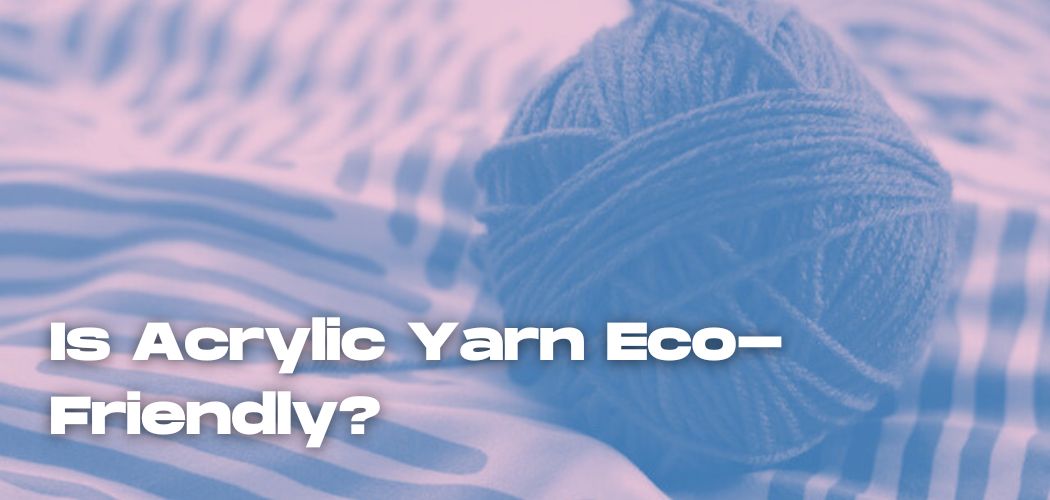Yarn is an integral part of the textile industry, and there are many different types of yarns that can be used for a variety of purposes. Acrylic yarn is one type of yarn that is often used in the production of clothing and other textiles.
Acrylic yarn is a synthetic yarn made from a polymer called polyacrylonitrile. This polymer is derived from petroleum or natural gas.
Acrylic yarn is often used as a substitute for wool because it is cheaper to produce and has similar properties to wool, such as being lightweight and warm.
However, there are some concerns about the environmental impact of acrylic yarn.
Is Acrylic Yarn Environmentally-friendly?
The production of acrylic yarn requires the use of harmful chemicals, including carcinogens. These chemicals can pollute the air and water during production and disposal.
Additionally, acrylic yarn is not biodegradable, so it can add to the growing problem of plastic pollution. Acrylic yarn also takes a long time to decompose, which means that it can clutter up landfills for many years.

Despite these environmental concerns, acrylic yarn remains a popular choice for many textile producers because it is affordable and durable.
Acrylic yarn also has some benefits over other types of synthetic yarns. Acrylic yarn is less likely to pill than other synthetic yarns, and it can be machine-washed and dried.
Acrylic yarn is also hypoallergenic, so it may be a good choice for people with wool allergies.
Another advantage of acrylic yarn is that it doesn’t shed as much as other types of yarn. This means that it produces less lint in the environment and requires less cleaning.
The Production Process of Acrylic Yarn
Acrylic yarn is made of a synthetic polymer called acrylonitrile. This polymer is derived from petroleum, natural gas, and air.
The production process of acrylic yarn involves combining these three ingredients to create a fiber that can be used to make fabric.
The first step in the production process is to extract the acrylonitrile from petroleum or natural gas.
This monomer is then combined with other chemicals to create a polymer called polyacrylonitrile. This polymer is then spun into yarns that can be used to make fabric.
The production process of acrylic yarn requires a lot of energy and produces harmful emissions that can impact the environment.
There are some companies that are working to create more environmentally-friendly versions of acrylic yarn, but it is still an ongoing challenge.
There are also some recycled options available that can help reduce the environmental impact of this type of yarn.
Is Acrylic Yarn Biodegradable?
The answer to this question is a bit complicated. Acrylic yarn is made from petroleum, which is a non-renewable resource.

Any product that is biodegradable needs to be able to break down into natural substances that can be used by plants or other organisms.
Petroleum is not biodegradable, so the acrylic yarn cannot be considered eco-friendly in that sense. However, acrylic yarn is recyclable, so it can be reused instead of being sent to a landfill.
How Can You Reduce the Impact of Acrylic Yarn on the Environment?
If you are concerned about the environmental impact of your clothing, there are some things you can do to reduce the impact of your wardrobe on the environment.
You can buy secondhand clothing made with acrylic yarn or look for brands that use recycled or sustainable materials.
You can also choose to handwash your acrylic garments and air-dry them to further reduce their impact.
By taking these steps, you can help make a difference in the fight against climate change.
If you are looking for an eco-friendly alternative to acrylic yarn, consider using natural fibers like wool or cotton. These options may be more expensive than acrylic yarn, but they are better for the planet!
What Yarn is Environmentally Friendly?
There are a number of yarns available in the market today, including natural fibers and synthetic yarns. Bur which one of these yarns is environmentally friendly?
The answer to this question largely depends on the type of yarn you are using. For example, natural fiber yarns like wool and cotton are considered to be eco-friendly because they are biodegradable.

On the other hand, synthetic yarns such as acrylic are not biodegradable and can take centuries to decompose.
So, if you’re looking for an environmentally friendly option, it’s best to stick with natural fiber yarns. However, if you’re looking for a durable and affordable option, synthetic yarns may be a better choice for you.
Ultimately, it all comes down to personal preference!




